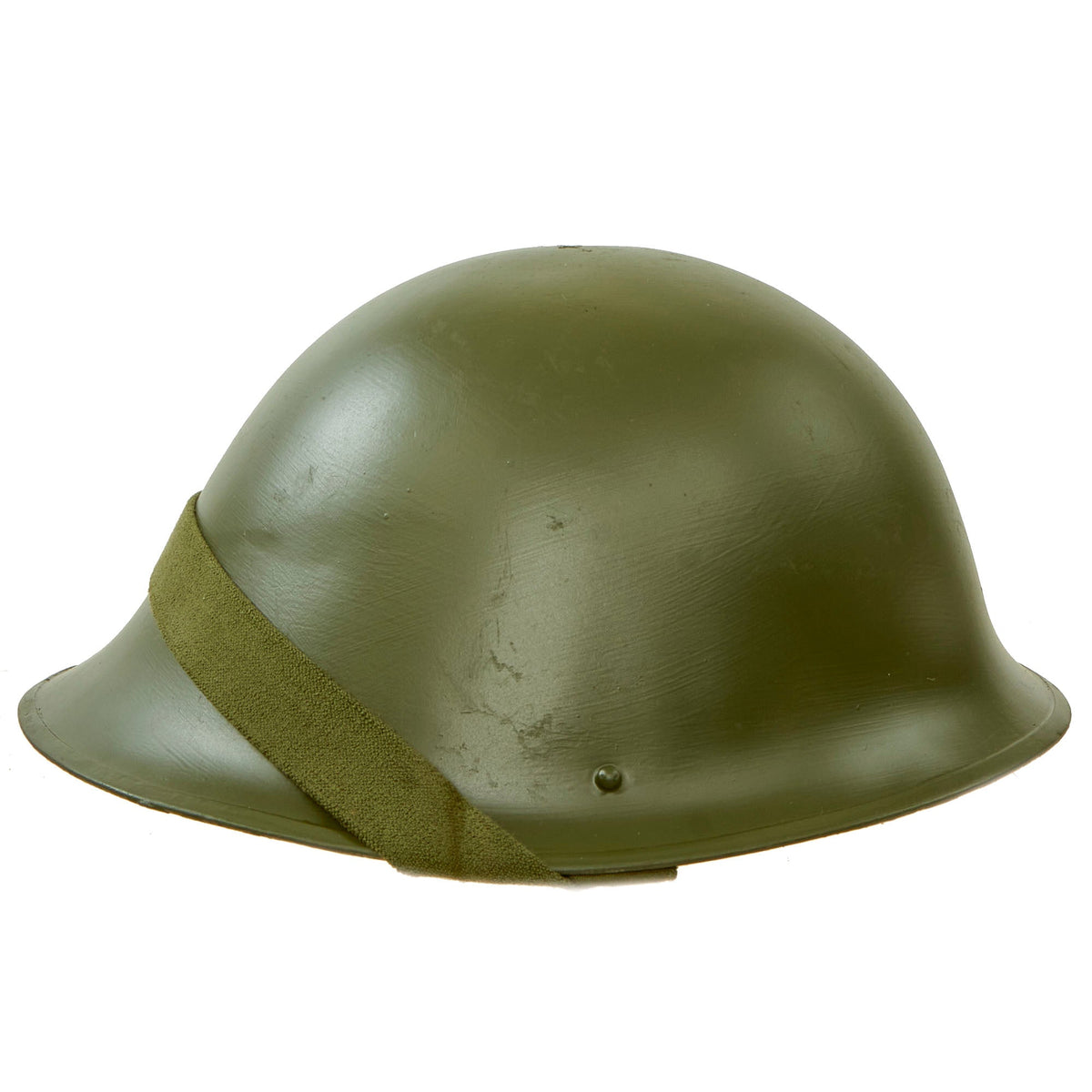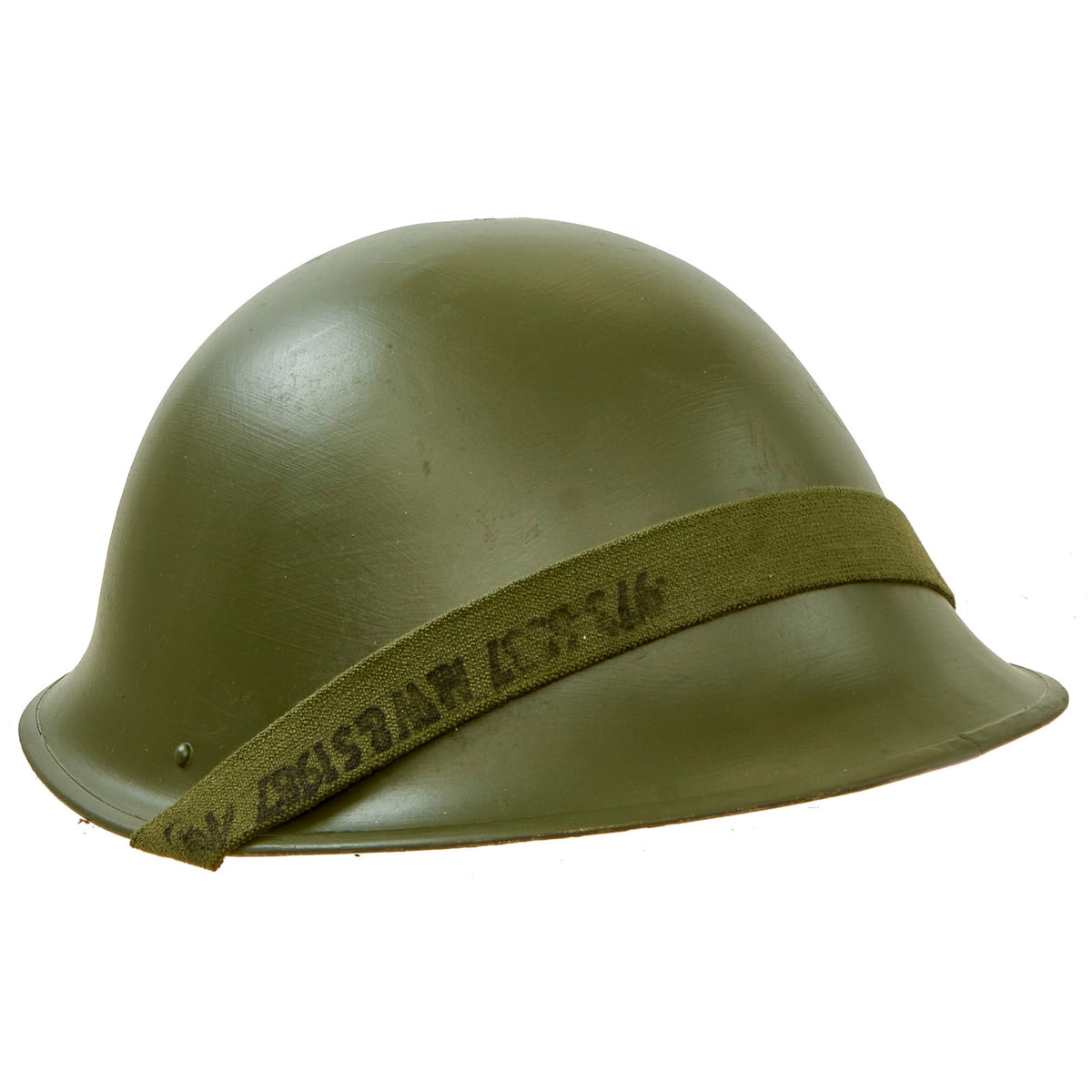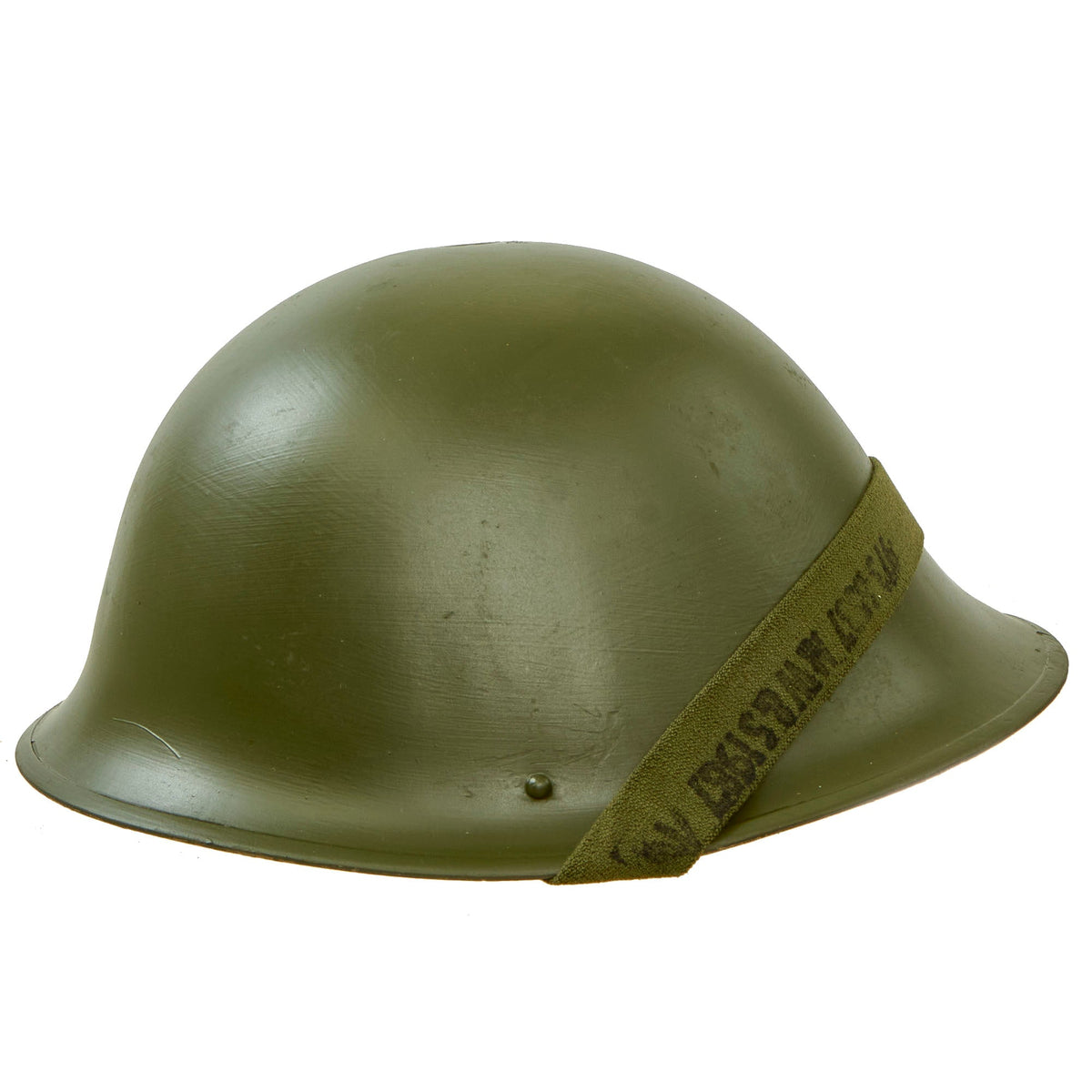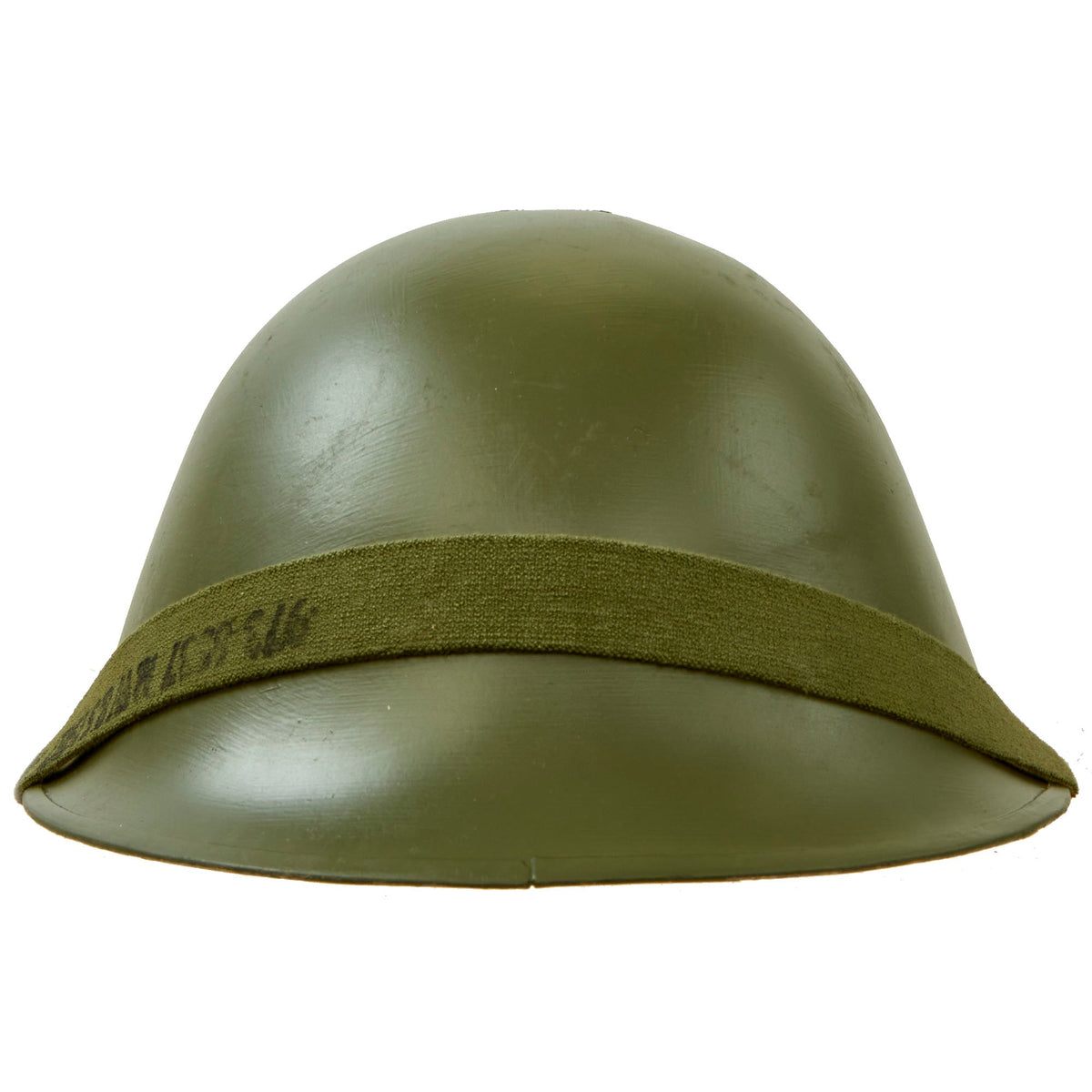Original British P-1944 Turtle MkV Steel Helmet with Liner & Chinstrap – Restored Original Items
$ 93,45 $ 46,73
Original Item: The MKIII helmet was issued for use in the D-Day invasion of Europe in 1944; it was the next steel helmet pattern to be adopted by the British after the Dough Boy style of WWI. In use through the close of WWII and in regular use through Korea and the Falkland war.
The Mk III Helmet was a steel military combat helmet developed for the British Army in 1941. First worn in combat by British and Canadian troops on D-Day, the Mk III was used alongside the Brodie helmet for the remainder of the Second World War. It is commonly referred to as the “turtle” helmet because of its resemblance to a turtle shell.
The Mark III helmet was designed to provide better protection for the side of the head than its predecessor. It was a deeper helmet with a smaller brim and provided 38% more protection than the Mark II, particularly at the sides. The Mark III helmet was issued primarily to assault troops for the Normandy invasion in June 1944, and a large number of helmets from British stocks were issued to the 3rd Canadian Infantry Division in addition to British units. Small numbers also went to the 2nd and 4th Canadian Divisions. All Mark III helmets in Canadian stores were returned to the UK shortly after the end of the Second World War.
The Mk III was itself replaced after the war by the Mark IV helmet, which it closely resembled. The differences were that the rivets attaching the chinstrap to the helmet were placed much lower down on the shell and the use of a ‘lift the dot’ fastener for the liner. These modifications allowed the Mk IV to be utilized for carrying water. The Mark IV helmet was eventually replaced by the Mark V, which looked similar to the MKIV, but had a more padded liner. The MK V was used until the late-1980s at which point the British replaced all steel helmets with the Mark 6, which was made from nylon fiber.
Each MkV helmet comes complete with steel bowl, original liner and original chin strap. The chinstraps and liners may have visible dates, however we cannot guarantee this. The shells have all been stripped and restored, and may have dates stamped into the shell, however these will be very faint if visible. Most will show 1960s – 1970s dates if they have any visible.
These are 100% original except for the paint on the shell and are becoming increasingly difficult to find on the market. With the restored shells these really look the business and will make a great part of any helmet collection!
| Hand Select | No, Yes |
|---|
Fast Shipping with Professional Packaging
Thanks to our longstanding association with UPS FedEx DHL, and other major international carriers, we are able to provide a range of shipping options. Our warehouse staff is expertly trained and will wrap your products according to our exact and precise specifications. Prior to shipping, your goods will be thoroughly examined and securely secured. We ship to thousands clients each day across multiple countries. This shows how we're dedicated to be the largest retailer on the internet. Warehouses and distribution centres can be located throughout Europe as well as the USA.
Note: Orders with more than one item will be assigned a processing date depending on the item.
Before shipping before shipping, we'll conduct a thorough inspection of the items you have ordered. Today, the majority of orders will be delivered within 48 hours. The delivery time will be between 3-7 days.
Returns
The stock is dynamic and we cannot completely manage it because multiple stakeholders are involved, including our factory and warehouse. So the actual stock may alter at any time. It's possible that you may not receive your order once the order has been made.
Our policy is valid for a period of 30 days. If you don't receive the product within 30 days, we are not able to issue a refund or an exchange.
You can only return an item if it is unused and in the same state as the day you received it. You must have the item in its original packaging.
Related products
Uncategorized
Uncategorized
Uncategorized
Uncategorized
Uncategorized
Uncategorized
Angolan Rebel 1970s era 60mm Inert Display Mortar from Angolan Civil War Original Items
Uncategorized
Uncategorized
Uncategorized
Uncategorized
Uncategorized
Uncategorized
Uncategorized
Armored Burgonet Helmet & Polearm from Scottish Castle Leith Hall Circa 1700 Original Items
Uncategorized
Uncategorized
Uncategorized
Uncategorized
Uncategorized
Uncategorized













































































